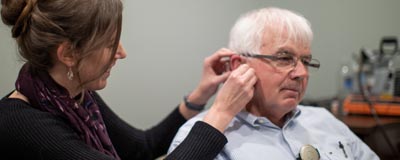How Youth are Experiencing More Noise Exposure than Ever
Noise is everywhere, and it can be inescapable. For years, Doctors, Specialists and Audiologists have been warning about the potential health risks iPods and MP3 players pose to our hearing health. What a lot of people misinterpret is that these professionals are warning about your immediate potential risk of hearing loss, not 20 to 50 years from now. The World Health Organization calls environmental noise an “underestimated threat”. We are constantly surrounded by noise. When listening to music in challenging environments, we tend to increase the volume to compensate for the surrounding ambient noise. The levels we play our music at can cause irreversible damage to our hearing in a very short period of time.
Who is being affected?
Everyone is being affected by environmental noise, however it’s how we all choose to deal with it. Today, better noise protection is provided in environments where required, especially in the workplace. However, listening to music through earbuds, going to exercise classes, concerts, bars and even sporting events are all examples of places we are not protected.
Earbuds:
Ear buds sit it the lower portion of the bowl of the ear and do not block out external noises such and traffic or bus/train noise. Therefore, in order to hear the music clearly, you are forced to increase the volume of the music player. Listening to increased volume for over 30 minutes can cause immediate damage to our hearing cells. The solution is simply a different style of wearable technology. Sound Isolating Headphones or Noise-Cancelling Headphones are both excellent choices for sound quality and hearing protection. There is a general assumption that lower volume equals poor sound quality. However, a good set of headphones allow you to hear more detailed nuances in the music without the damaging volume. Here is a Popular Science article that discusses the dangers of headphones.
Exercise Classes:
Based on a study Vox performed they found that fitness classes such as Cyclefit or alternative Spin Classes have deafening volumes during the class. Their reasoning is it improves group motivation for some of the harder pieces throughout the work out, and allows people to follow the beat. However, the recorded sound levels at several different cycling studios averaged 100 decibels for a 1 hour class. For more on the study click here.
Concerts:
Concerts are always an enjoyable time, but depending on your positioning at the venue your ears could be in danger. Most concerts play at 110dB. If you’re standing close to the speakers that volume you are exposed to could be significantly louder. Make sure to protect your ears or take breaks from the concert.
How Loud is too Loud?
| Sound Level | Similar To | Minimum Duration without causing irreversible damage | Maximum Duration Per Day |
| 85dB | Restaurant | 8 Hours | 10 Hours |
| 90dB | Band Rehearsal | 2 Hours | 8 Hours |
| 100dB | Power Tools | 15 Minutes | 2 Hours |
| 105dB | iPod at High Volume | 5 Minutes | 1 Hour |
| 110dB | Concert | 1.5 Minutes | 30 Minutes |
| 115dB | Ambulance Siren | 9 Seconds | 15 Minutes |
What can we do to prevent NIHL?
The World Health Organization found that 60% of childhood hearing loss is preventable. The key is to limit situations in which hearing is jeopardized. A good strategy is the 60/60 rule: When listening to music through headphones or earbuds, keep the volume at 60 percent of its maximum volume, for only 60 minutes a day. If you are planning on attending several concerts be sure to bring a set of disposable foam earplugs. Better yet, investing in Musicians Plugs will provide a much better sound quality and enjoyment at the show. (They are $25 for a generic set, $200 for custom molded versions.) If you find yourself at an exercise class or a bar and the music is uncomfortably loud, simply ask them to turn it down.
Find out more about our Hearing Protection options.






